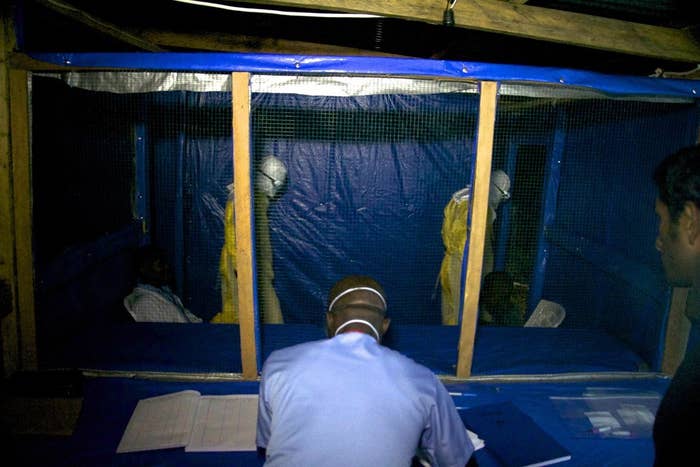
For once, there's good news in rural Liberia.
Last week, the International Medical Corps opened Liberia's newest Ebola treatment center, in rural Bong County. It's one of only a handful of treatment centers in the country hardest-hit by West Africa's Ebola outbreak, and it's the first treatment center to open since the disease spread from Liberia's two key epicenters to most of the rest of the country.
The treatment center came too late for its first two patients — a 45-year-old man and his stepson, both of whom who died — but it's an irrefutable mark of progress in a response that has been hampered by delays and malaise.
"Every week that goes by that an Ebola treatment unit doesn't open up, we probably need to add another one or two [treatment units] on the back end. The growth is exponential now, so if there's a delay, that means the scale of the response has to grow," Sean Casey, the International Medical Corps' Ebola emergency response team director, told BuzzFeed News by telephone from Bong County.
Monrovia, the capital of Liberia, also saw a new treatment ward open on Sunday.
Ebola is a rare but highly contagious virus transmitted through contact with bodily fluids. Health care workers, or those who care at home for the sick (or prepare the burial of the dead), are at the highest risk of contracting the disease.
In late August, the World Health Organization estimated that Liberia would need at least 1,000 beds. But on Tuesday, the global health body said that if nothing changes about the rate of response, Liberia could see nearly 10,000 Ebola cases before early November.
In that context, every new treatment facility, whatever its size, crucial. Patients who find a bed in a treatment center drastically reduce their chances of infecting other family members, and a WHO study released on Tuesday found that those who receive formal Ebola care have higher survival rates.
IMC's new facility, which was funded by USAID and the State Department's Office of Foreign Disaster Assistance, has 70 beds and plans to expand to 100. Today, the IMC facility is caring for 14 patients.
That means the facility is only 20% full, but Casey said it would be impossible to fill the rural treatment facility, which sits on a dirt road more than a mile away from the county's biggest town.
Unlike the treatment centers in Monrovia, where patients arrive in taxis and wait outdoors for an empty bed, "We hardly have any walk-ins," Casey said. Instead, the treatment center sends an ambulance to remote locations to pick up patients suspected of having Ebola.
"Today, for example, our ambulances have to go to place that's three hours away. It takes an hour for them to pick up the patients safely and three hours to come back," he said. "That's one of the realities of a rural Ebola treatment unit is [that] to do patient transport safely takes a lot of time."
The new IMC facility is one of the first tangible signs in Liberia of a belated urgency in the global response to Ebola. Although the WHO first confirmed the disease in Guinea in March, and although Sierra Leone and Liberia were reporting unconfirmed cases at the same time, it's only in the last few weeks that Western governments have engaged with the public health crisis in earnest.
The United Nations has put together a special emergency response unit, and the American and the British governments have pledged military assistance to the region, including 3,000 U.S. troops to establish a regional response base and assist with logistics.
"This has never happened before. There has never been an Ebola outbreak like this, so I think there was a kind of learning curve for a lot of us in the public health sector and in the emergency sector for how big this could get and how bad it could get," Casey said. "I think there's general consensus around the necessary scale of the response but the resources are not all behind it at this point."
